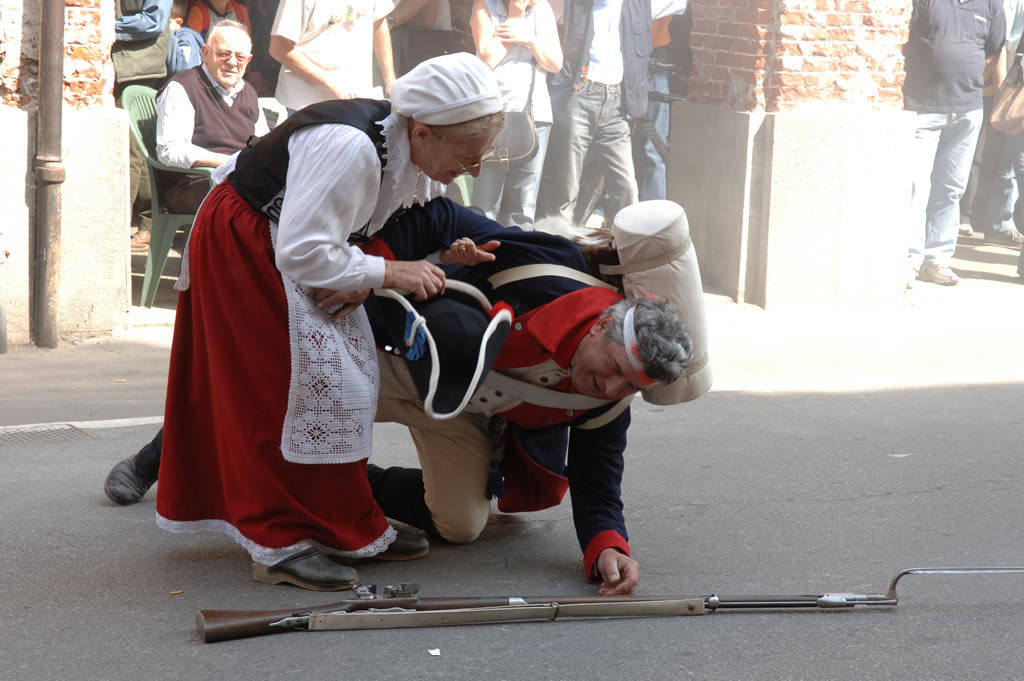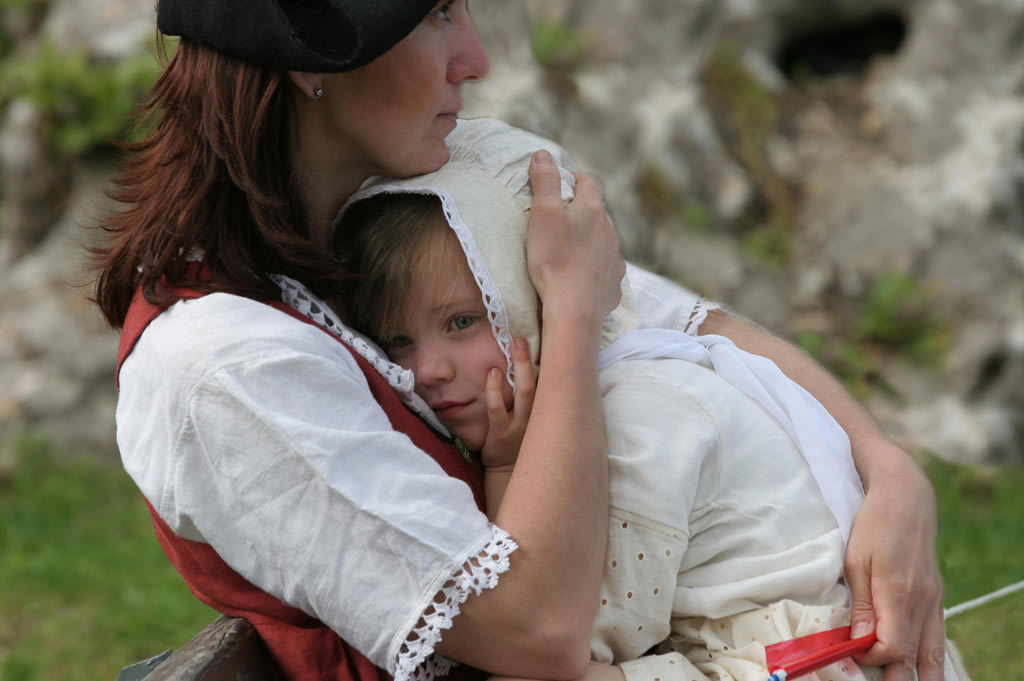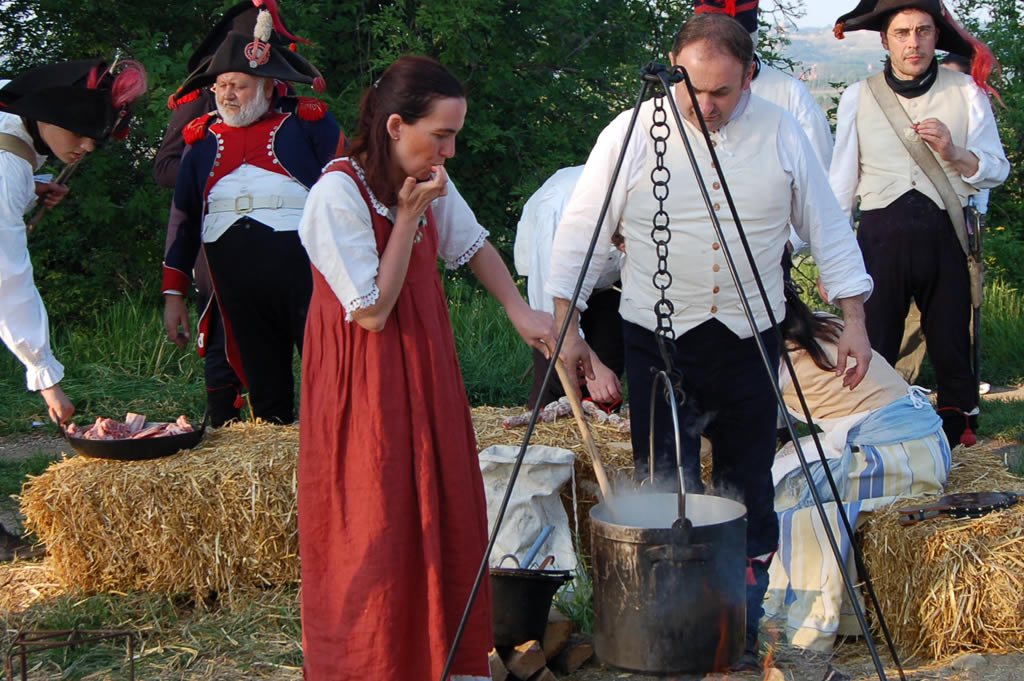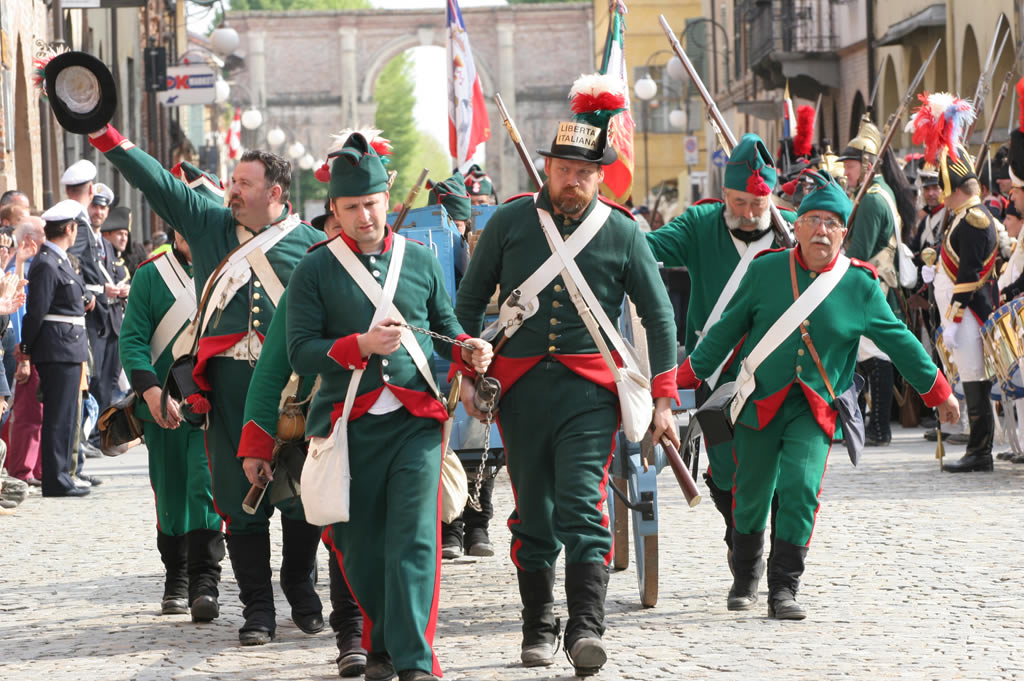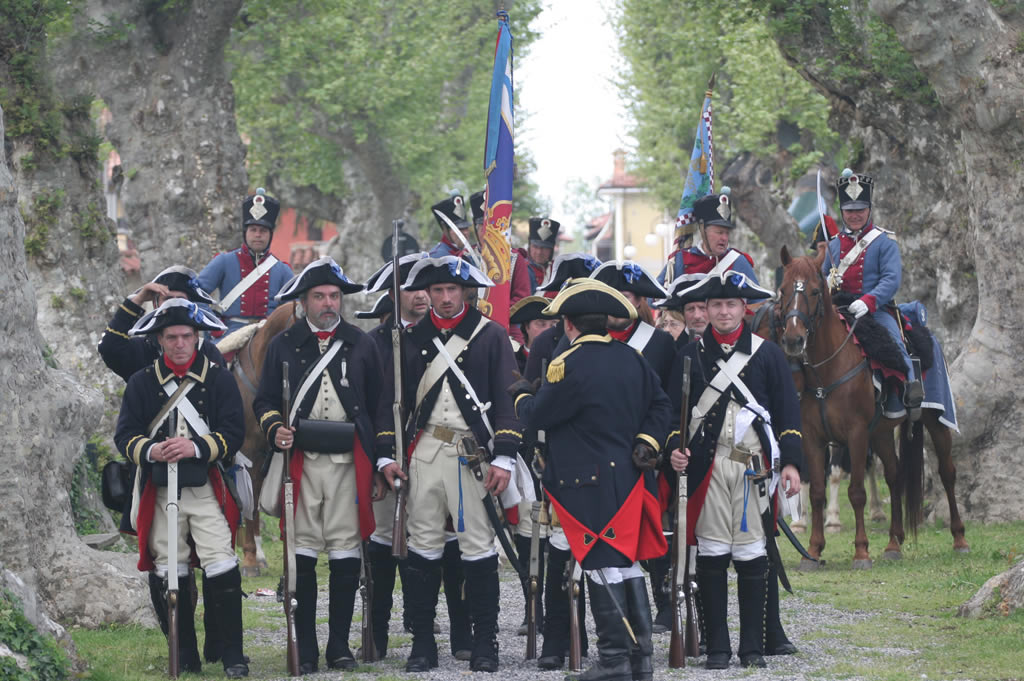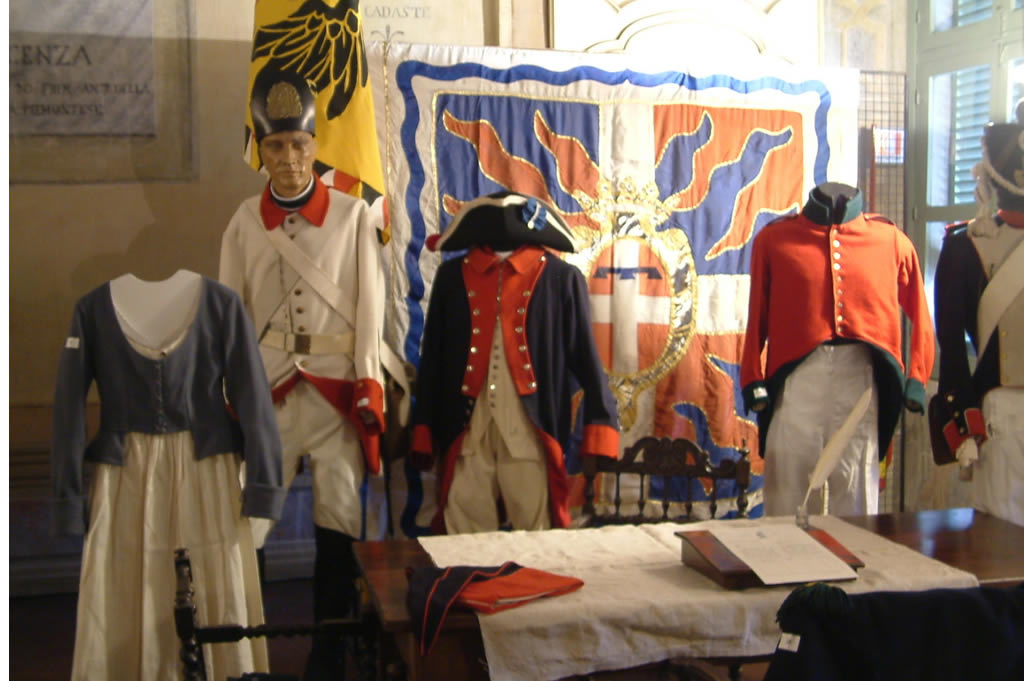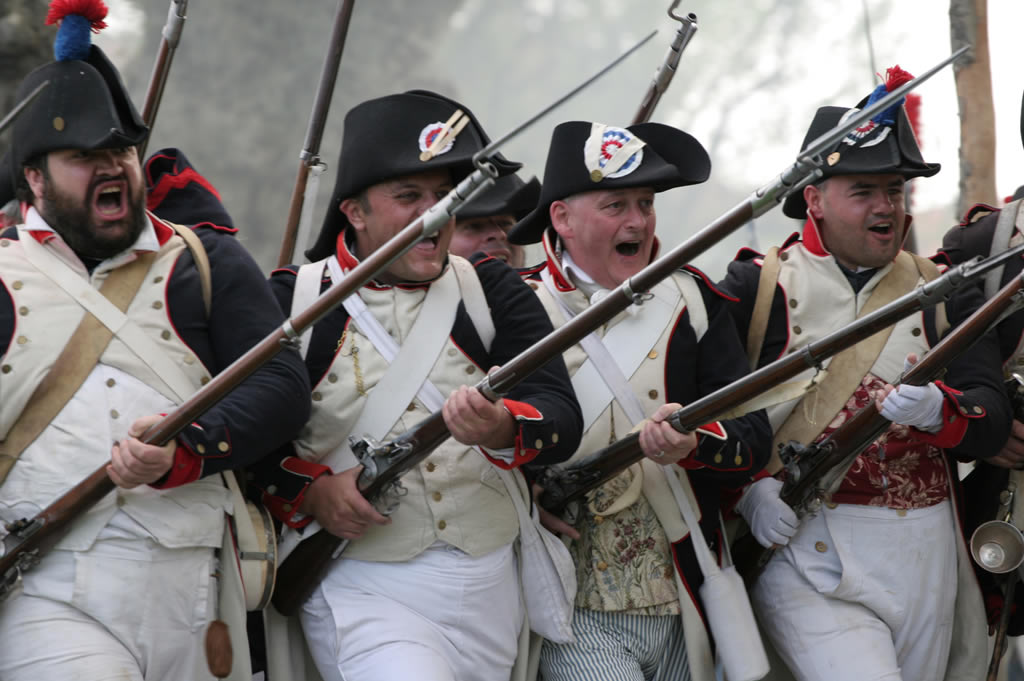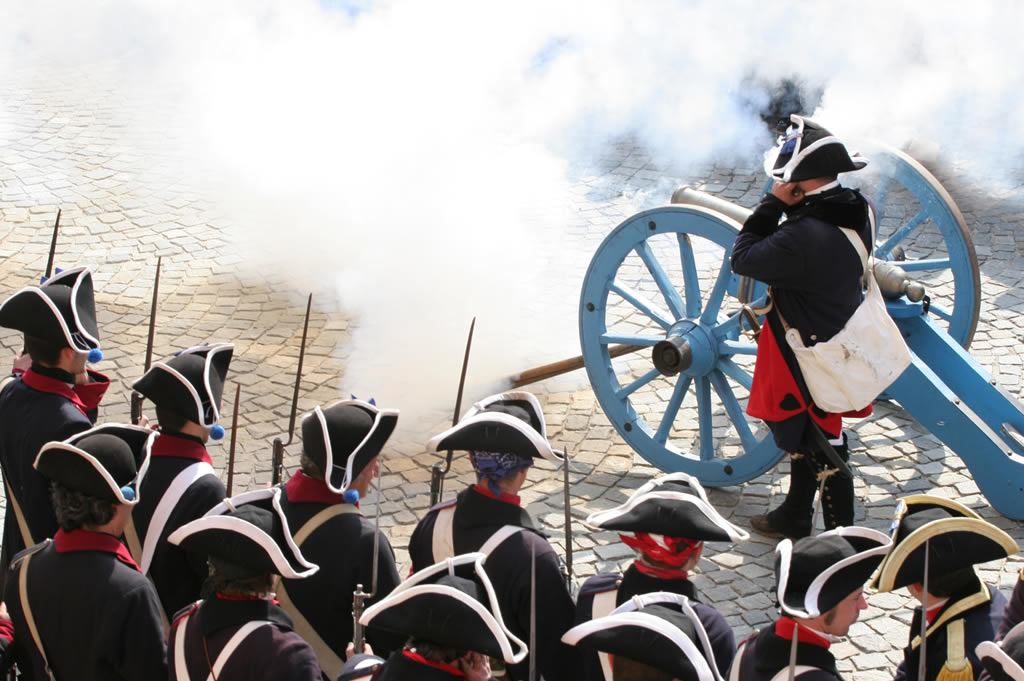MENU
Fondazione De Benedetti - Cherasco 1547
Cultural and Scientific Activities
Re-enactment of 1796 Armistice
Napoleon Bonaparte was only 26 years old when he took command of the Italian Army. Leaving Nice on April 2, in an unstoppable march along the coast, he engaged in a stunning series of battles and victories that brought about the Armistice of Cherasco on April 28, 1796, and the famous proclamation: "People of Italy, the French army comes to break your chains…"
The Armistice, having evolved the following May 15 into the Treaty of Paris, put an end to the brilliant first phase of the Italian Campaign, prelude to the subsequent Napoleonic myth. It formalized French occupation of the southwest territory of Piedmont, from the Valley of the River Stura to Alessandria, including the fortresses of Cuneo, Ceva and Tortona. It also imposed on the House of Savoy withdrawal from its alliance with the Austrians and the cession of Nice and Savoy to France.
In the aim of commemorating the Armistice of April 28, 1796 between Napoleon and Victor Amadeus III of Savoy, the spectacle organized in Cherasco in 2007 brought to life the spirit of the age with a show of arms and uniforms faithful to the period.
The event extended over several days; besides the reenactment of the battle involving the French, Austrian and Piedmontese troops, the program included cultural manifestations associated with the event.
Napoleonic Itineraries in Piedmont
On March 9, 1796, Napoleon, after only two days of matrimony with Joséphine Tascher de La Pagerie, the widow Beauharnais, left for Italy at the head of approximately 38,000 poorly equipped men. This was the kick-off for a military operation which, in the plans of the Directorate (the leadership committee that governed France from 1795 to 1799), should simply have been a divertive maneuver, since the real attack on Austria was to take place with the Rhine Army.
Instead, the launch of Napoleon's first Italian Campaign brought to light the military and political genius of the man, who, despite numerical and logistical inferiority, succeeded in repeatedly defeating the Austrian and Piedmontese forces.
There followed numerous confrontations with the Austrian and Piedmontese forces – at Dego, Millesimo, Cairo Montenotte, Cosseria and at San Michele Mondovì, where a historic battle took place on April 19, 1796 called the Battle of the San Giacomo Pass ("Battaglia della Bicocca di San Giacomo") or The Storming of San Michele ("Presa di San Michele").
With the Armistice of Cherasco signed on April 28, 1796, and ratified on May 15 in the Treaty of Paris, Napoleon Bonaparte compelled Victor Amadeus III of Savoy to make painful concessions, including the cession of Savoy and Nice to France.
On May 10, 1796, Napoleon stormed the last Austrian defense in the battle at the Bridge of Lodi, and four days later, on May 15, marched into Milan.
Thus ended the first phase of the Italian Campaign.
Giuseppe Bagetti, the "captain-engineer-geographer-artist" of the French army, began in 1796-97, following the first Napoleonic campaign in Italy, masterfully to reconstruct the battle scenes, creating a series of vedute, landscape paintings, drawings and watercolors, which illustrate with geographic accuracy the most important moments that highlight their protagonist – the French general and his army. A veritable retrospective, equivalent of a journalistic photo essay, exalting the valor of the Napoleonic army and its commander.
Objectives
On April 28, 1796, Revolutionary France sealed in Cherasco an important armistice with the Piedmontese and Austrian armies, in consequence of which southwest Piedmont became French territory.
For the Jewish population living in the French-dominated territory, this event signaled the beginning of the first period of peace and civil liberties, which prevailed until the Restoration of the Savoy monarchy in 1814.
In remembrance of this period, the De Benedetti-Cherasco 1547 Foundation, through its Committee for Ties with France, with the support of external contributions, proposes activities and events remindful of the times, with the aim of maintaining and developing a cultural tie between the Piedmont and France.
Further Reading
Questo sito utilizza i cookie per migliorare la tua esperienza di navigazione. Usando questo sito sei in accordo con la nostra privacy policy


